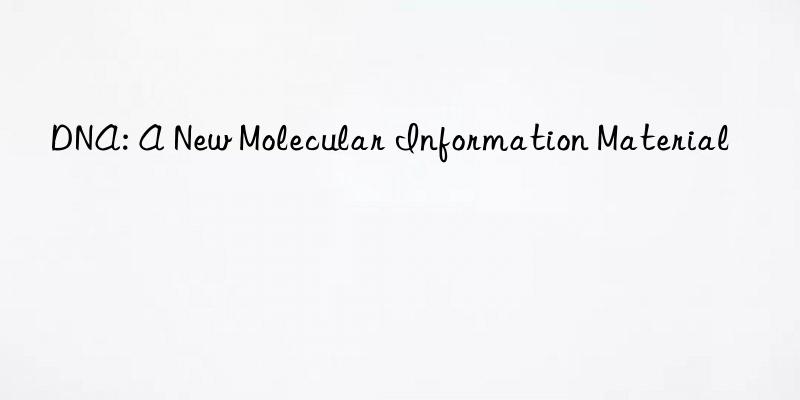
Deoxyribonucleic acid (DNA), as the "code of life", has become one of the most familiar scientific terms. However, in the recent research by Fan Chunhai, academician of the Chinese Academy of Sciences and dean of the School of Chemistry and Chemical Engineering of Shanghai Jiaotong University, DNA is no longer just a carrier of genetic material, but based on the concept of "framework nucleic acid" and artificially designed to become a New molecular information materials with controllable mechanical properties provide new tools for life analytical chemistry.
Providing new tools for life analytical chemistry
The inherent double helix structure of DNA is widely known, and carries huge genetic information of life through the precise pairing and infinite arrangement and combination of nucleotide ATCG bases. In the DNA structure, A and T are paired, and G and C are paired. Using the complementary nature of DNA bases, the two paired DNA strands can form a double strand like a zipper, and further twist into a double helix structure.
Fan Chunhai took the lead in proposing the concept of "framework nucleic acid" in the world. Through the design, regulation and tailoring of chemical self-assembly processes such as hydrogen bond pairing, base stacking and shape matching, a series of framework nucleic acid assemblies were constructed .
The framework nucleic acid self-assembled through DNA programming has the characteristics of precise structure, controllable size and shape, and adjustable mechanical properties. It has become a new molecular information material and successfully realized highly sensitive biomolecular sensing and detection. Cell bioimaging analysis can provide new tools for life analytical chemistry.
Compared with traditional DNA, DNA framework nucleic acid has a more stable structure and is not easily degraded by exonucleases in the body. It can enter cells more accurately and efficiently, and deliver targeted drugs to the human body. "In addition, we can also use different forms of DNA structures to achieve detection, imaging, and gene editing in animals and plants. In the near future, framework nucleic acids are expected to be used in many fields such as biomedicine, gene breeding, precision agriculture, and information storage. Play an important role." Fan Chunhai said.
Provide transformative material for information storage
Currently, the total amount of global information data is growing explosively. From the perspective of manpower, material resources, and energy, it is difficult for the existing silicon-based computer storage structure to meet the growing trend of data in the future. The amount of data in the world in 2020 is 44ZB. With the development and popularization of Internet, artificial intelligence, 5G and other technologies, this number is still growing and is expected to reach 175ZB by 2025.
Fan Chunhai said that DNA can store life information, as well as data information. DNA, composed of long chains of nucleotides ATCG, is the information storage material of the living world. Data can be stored in the above-mentioned sequence of letters, thus turning DNA into a new form of information technology. To put it simply, the principle of DNA storage is to correspond one-to-one between the base sequence in the DNA molecule and the stored information code, and convert text, pictures, sounds and other information into DNA sequences for storage.
DNA storage information has the characteristics of high storage density and strong robustness. Compared with traditional electronic storage technology, DNA storage technology is expected to increase the limit of data storage by 7 orders of magnitude. In my country's "14th Five-Year Plan" science and technology plan, DNA storage is shortlisted for 2035 cutting-edge technology. Fan Chunhai said: "In the next 5 to 15 years, Chinese scientists can hold a tube of DNA and tell the world that we record all the data in the world." (Zhang Xinggang)



 微信扫一扫打赏
微信扫一扫打赏
